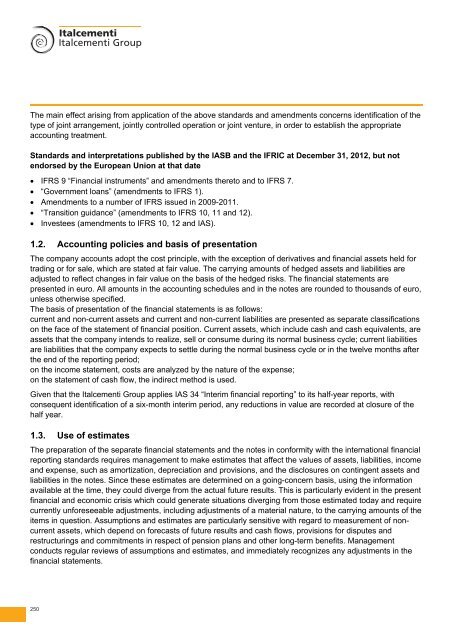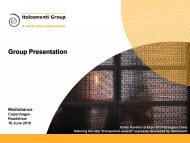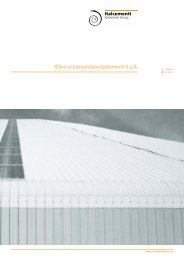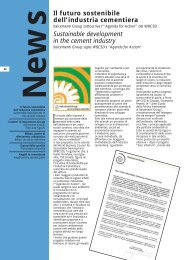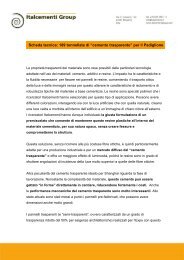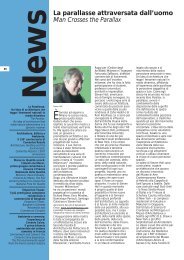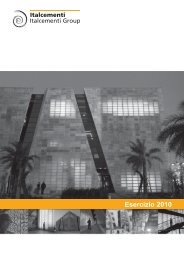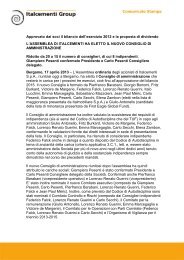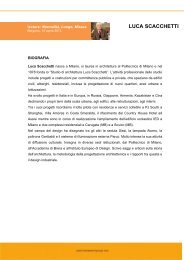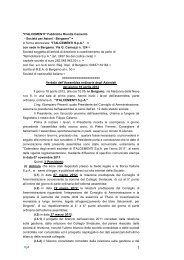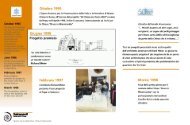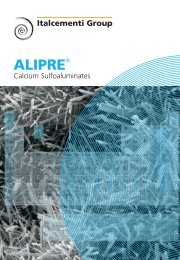2012 Annual Report - Italcementi Group
2012 Annual Report - Italcementi Group
2012 Annual Report - Italcementi Group
Create successful ePaper yourself
Turn your PDF publications into a flip-book with our unique Google optimized e-Paper software.
The main effect arising from application of the above standards and amendments concerns identification of the<br />
type of joint arrangement, jointly controlled operation or joint venture, in order to establish the appropriate<br />
accounting treatment.<br />
Standards and interpretations published by the IASB and the IFRIC at December 31, <strong>2012</strong>, but not<br />
endorsed by the European Union at that date<br />
IFRS 9 “Financial instruments” and amendments thereto and to IFRS 7.<br />
“Government loans” (amendments to IFRS 1).<br />
Amendments to a number of IFRS issued in 2009-2011.<br />
“Transition guidance” (amendments to IFRS 10, 11 and 12).<br />
Investees (amendments to IFRS 10, 12 and IAS).<br />
1.2. Accounting policies and basis of presentation<br />
The company accounts adopt the cost principle, with the exception of derivatives and financial assets held for<br />
trading or for sale, which are stated at fair value. The carrying amounts of hedged assets and liabilities are<br />
adjusted to reflect changes in fair value on the basis of the hedged risks. The financial statements are<br />
presented in euro. All amounts in the accounting schedules and in the notes are rounded to thousands of euro,<br />
unless otherwise specified.<br />
The basis of presentation of the financial statements is as follows:<br />
current and non-current assets and current and non-current liabilities are presented as separate classifications<br />
on the face of the statement of financial position. Current assets, which include cash and cash equivalents, are<br />
assets that the company intends to realize, sell or consume during its normal business cycle; current liabilities<br />
are liabilities that the company expects to settle during the normal business cycle or in the twelve months after<br />
the end of the reporting period;<br />
on the income statement, costs are analyzed by the nature of the expense;<br />
on the statement of cash flow, the indirect method is used.<br />
Given that the <strong>Italcementi</strong> <strong>Group</strong> applies IAS 34 “Interim financial reporting” to its half-year reports, with<br />
consequent identification of a six-month interim period, any reductions in value are recorded at closure of the<br />
half year.<br />
1.3. Use of estimates<br />
The preparation of the separate financial statements and the notes in conformity with the international financial<br />
reporting standards requires management to make estimates that affect the values of assets, liabilities, income<br />
and expense, such as amortization, depreciation and provisions, and the disclosures on contingent assets and<br />
liabilities in the notes. Since these estimates are determined on a going-concern basis, using the information<br />
available at the time, they could diverge from the actual future results. This is particularly evident in the present<br />
financial and economic crisis which could generate situations diverging from those estimated today and require<br />
currently unforeseeable adjustments, including adjustments of a material nature, to the carrying amounts of the<br />
items in question. Assumptions and estimates are particularly sensitive with regard to measurement of noncurrent<br />
assets, which depend on forecasts of future results and cash flows, provisions for disputes and<br />
restructurings and commitments in respect of pension plans and other long-term benefits. Management<br />
conducts regular reviews of assumptions and estimates, and immediately recognizes any adjustments in the<br />
financial statements.<br />
250


